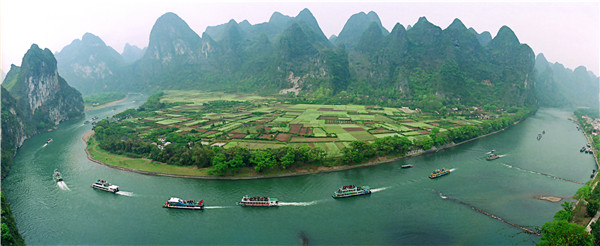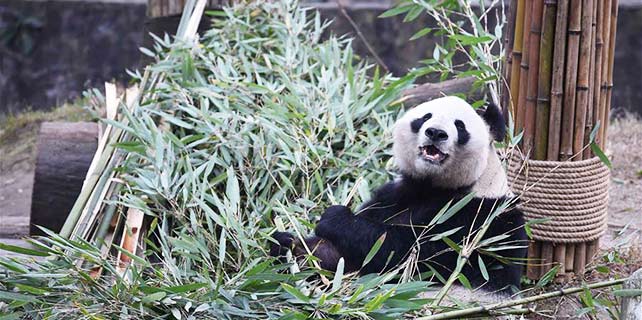Guilin's landscapes lure travelers looking for luxury
 |
|
[Photo provided to China Daily] |
The boutique hotel's diners enjoy riverside a la carte meals while watching flotillas of bamboo rafts ply the waterway with armadas of ducks.
The river reflects the massive rock dollops that spike Yangshou's terrain, mirroring the landscape in a rippling inverse. Dragonflies buzz and butterflies flutter through the air, also projecting reflections that wobble atop the water.
Over the following years, more foreigners rented and renovated abandoned hamlets.
Dutchman Herbert Bloembergen opened Outside Inn outside of town before selling it to open a restaurant in downtown Guilin.
A South African entrepreneur also converted farmsteads into the Secret Garden in another village.
And so on.
In recent years, international luxury brands like Banyan Tree have paved inroads into this outpost that previously appealed mostly to granola types and adventure travelers. (They still abound.)
Banyan claims to have become the area's first luxury hotel when it opened in 2014.
Visitors are greeted with the strike of a gong and the performance of a local song.
The brand's Yangshuo branch is encircled by karst clusters that are demarcated by the Li River, making its feng shui superlative.
Rooms average about 2,000 yuan ($290) a night and are around 500 yuan toward the low end.
Guests engage such local traditions as voyaging on bamboo rafts, viewing cormorant-fishing shows and painting fans.
Brick-and-wood buildings are constructed according to traditional aesthetics, with eves that swoop toward the skies.
- Tourism in Zhangjiajie improved as local environment well preserved
- Aerial photos of wetlands in Northwest China's Gansu
- China to increase tourism investment by 20 pct per year
- The world’s highest treetop corridor in Yunnan offers thrilling adventure
- Henan county an ancestral haven for Chinese worldwide









